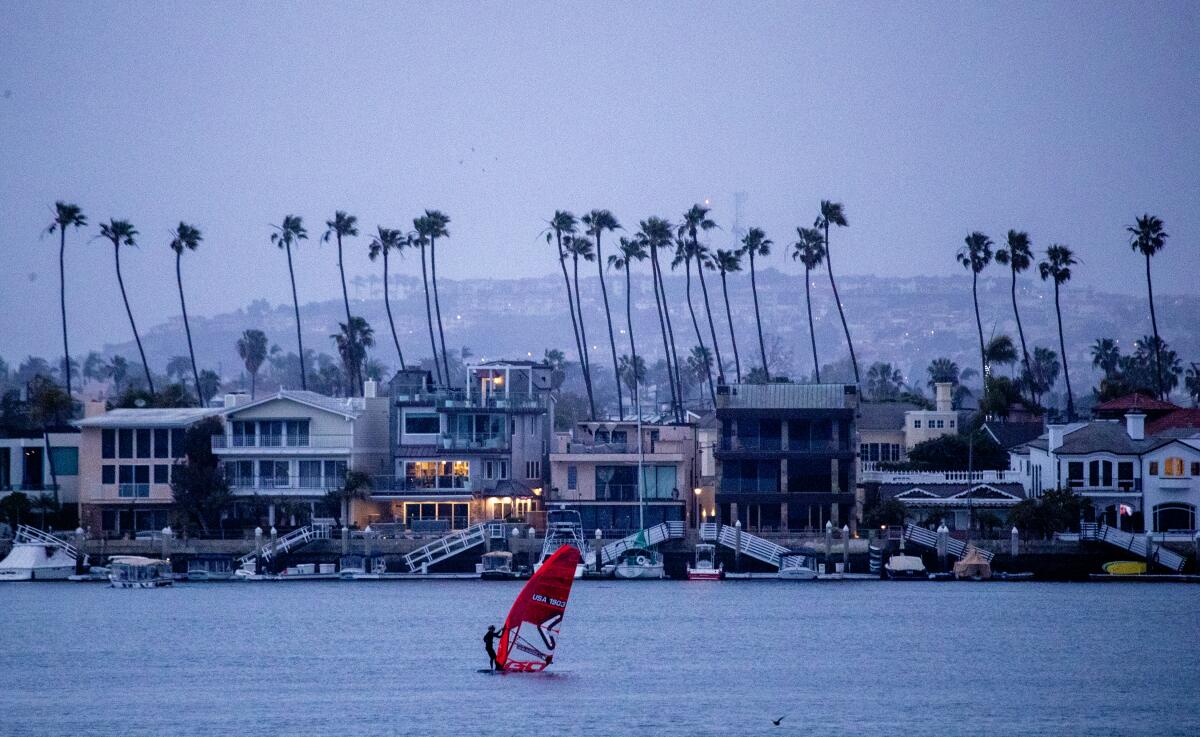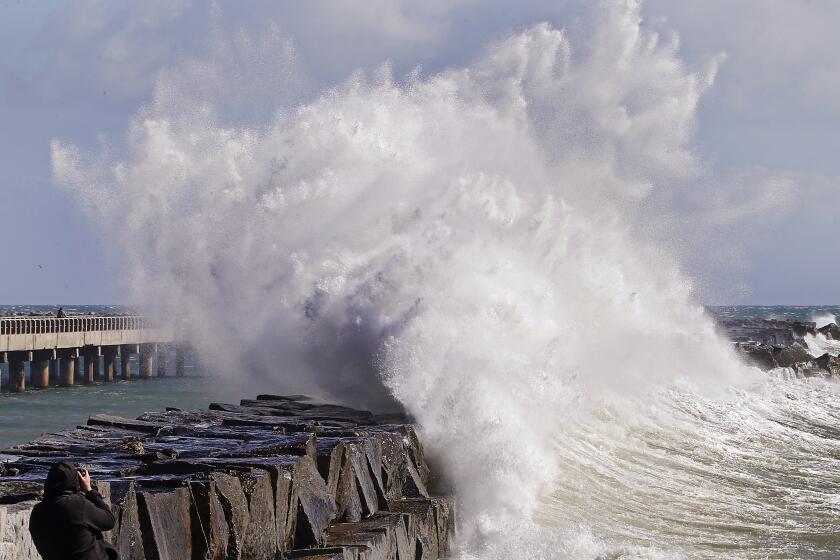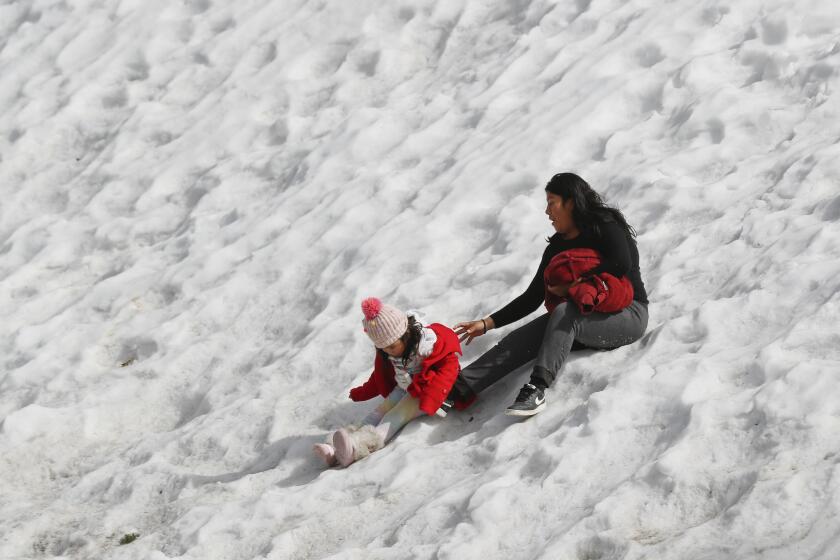Opinion: Snow, rain, wind and cold in California? Here’s some good news about this week’s winter storms

- Share via
The National Weather Service’s map of warnings and advisories on Wednesday looked like the aftermath of letting a toddler loose with your painting supplies. High wind and winter storm warnings, forecasting wind gusts up to 60 miles an hour and more than half a foot of snowfall in 12 hours, stretched across the U.S., from Texas to Montana and from California to Michigan. The storm — or rather, the two storms, the first of which blew down from British Columbia on Wednesday and the second of which will be traveling slowly southward over California from Thursday into Saturday — is the result of interactions between a large low-pressure zone in the upper atmosphere and a warm front stretching from Galveston, Texas, to New York City.
The good news is that unlike a number of other recent extreme weather events such as the monsoonal flooding in Pakistan that killed more than 1,500 people in 2022, the record-shattering Pacific Northwest heat wave in June 2021, and the cold snap that crippled the Texas power grid in February 2021 — this storm system does not seem to have been substantially caused by climate change.
Snow has already started to fall in the Antelope Valley, and forecasters are warning of possible dangerous conditions that could last through Sunday.
You can picture this week’s pressure systems as enormous rotating masses of air. The low-pressure zone is a huge bowl of cold air sitting over the western half of the country, spinning counterclockwise and rushing eastward. The warm front is more like a giant dome of warmth; it’s spinning clockwise and shielding the Southeast and mid-Atlantic states from the storm’s effects. The strength and size of these systems are determined mostly by two factors: the temperature difference between the North Pole and the equator (which is actually getting smaller as the climate changes) and the rotation rate of the Earth, which humans have had little (but not zero!) effect on.
Across most of the country the bulk of the damage was done by the first storm, which barreled along Interstate 90 leaving snow and ice in its wake. One remarkable quality about this storm was the speed of its travel; it made it from Vancouver to New England in a little over 48 hours. This was possible because the two air masses are spinning in opposite directions, like the disks on a pitching machine. And just like in the pitching machine, this creates an area of rapid acceleration, which was also responsible for the high winds across the West. The speed of the storm was also the reason for the massive amounts of snow dumped in the Upper Midwest — it could measure among the top five snowfalls ever recorded in the Twin Cities — since it allowed the wet air carried north by the front of the pressure system to meet the cold air carried south by the back.
In California, on the other hand, the more disruptive storm is the second one, which, in contrast to its speedy older sibling, is traveling at a leisurely pace over the state for two days or more. It is bringing rain to the valleys, snow to the mountains and high wind to everywhere. Because it is being carried in from the north by the mass of cold air, it will bring a lingering chill to the region even after the wind and rain have run their course; Southern California will remain up to 20 degrees colder than normal until the first few days of March.
The storm is expected to be ‘a snowmaker of the likes we have not seen for many years,’ a forecaster said, with a chance for snow even at sea level.
While climate change has little to do with this particular snowstorm, which is driven by the strengths of the two interacting pressure systems, it does affect winter weather as a whole. In general, climate change raises the average temperature and decreases snowfall by turning it to rain. But climate change has also been linked to an increase in frequency of events called “sudden stratospheric warmings,” which often cause waves of cold, dry air to envelop the country.
These occur when the air in the stratospheric polar vortex, usually well below minus 100 degrees during the long arctic night, suddenly warms up to a relatively mild minus 25 degrees. This jump in temperature disrupts the vortex, causing cascading disturbances that commonly lead to cold air outbreaks over the central U.S. and Europe a few weeks later. In fact, a sudden stratospheric warming is occurring right now far above our heads, with effects projected to reach the ground in the first few weeks of March. So, even after this week’s storms have passed, Americans shouldn’t put away their winter coats quite yet.
And even though this round of storms is not a harbinger of climate-change doom, the latter crisis is by far the more threatening. Unlike this week’s chill, the worst of the weird weather awaiting us in the coming decades still might be preventable.
Ned Kleiner is a PhD candidate at Harvard studying atmospheric science.
More to Read
A cure for the common opinion
Get thought-provoking perspectives with our weekly newsletter.
You may occasionally receive promotional content from the Los Angeles Times.










